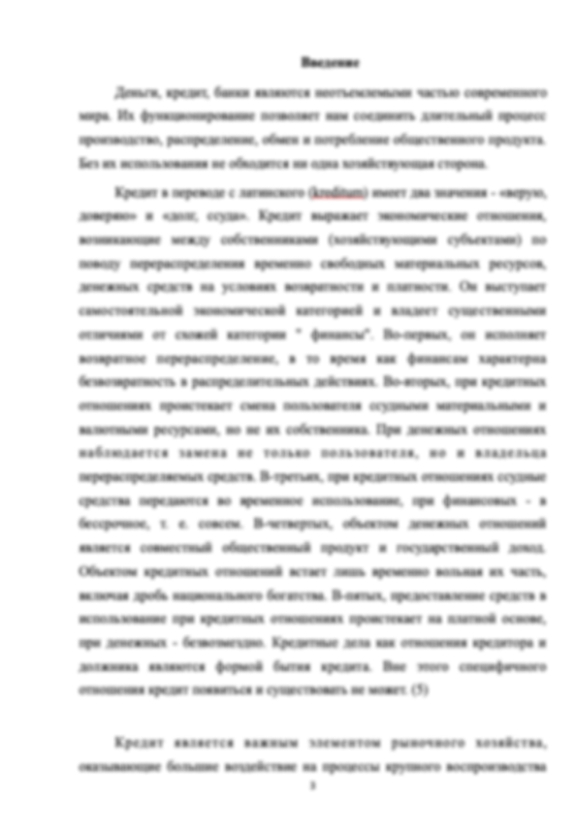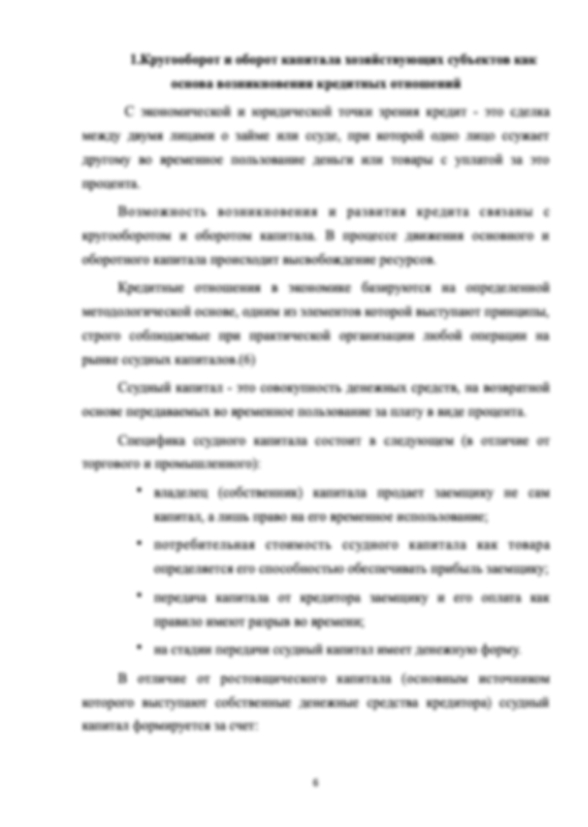Очень ответственный автор. Работы выполнена раньше срока, все пожелания и требования по работе учтены. Рекомендую
Информация о работе
Подробнее о работе

IDENTIFICATION OF NATURAL BOUNDARIES AND COMMUNITIES IN ST. PETERSBURG
- 22 страниц
- 2020 год
- 1 просмотр
- 0 покупок
Гарантия сервиса Автор24
Уникальность не ниже 50%
Фрагменты работ
Table of contents
Abstract 3
Introduction 3
The emergence of municipalities 4
Municipalities comparison 5
Related Literature 7
Research Methodology 9
Data Structure 10
Grid Mapping 10
The created set of centroids will be used in the next step of the research. Next, the time of pedestrian path between all centroids will be found using deployed OpenStreetMap local server. The resulting matrix of pedestrian distances will be used furtherly in the clustering process. 11
Searching for walking routes 11
Clustering and creating a new map of possible municipalities 12
Analysis of the created map 13
Conclusion and Discussion 14
References 16
Appendix 1: Komendantsky Aerodrom and Shuvalovo-Ozerki territory 17
Appendix 2: Svetlanovskoe, Chkalovskoe and Kronstadt territory 18
Appendix 3: Clustering results 19
The emergence of municipalities
The main research question of this paper: "How natural are the existing boundaries of municipalities?" To answer this question, it is necessary to turn to the history of the emergence of local communities in Russia. In the 19th century, the entire territory of the empire was divided into provinces and counties, which, in turn, were divided into church parishes. “An Orthodox parish refers to a meeting of Orthodox Christians, who are part of the flock of a local bishop who lives in a certain area near his church and is handed to the nearest pastoral leadership of one or several priests to achieve eternal salvation through common prayer, grace sacraments, edification, and works of Christian charity” (Ivanov P.A., 1914). Life in such parish presupposed the existence of rights and obligations, and within its borders, shepherds and flocks respected their interests. One of the features of the St.
...
Municipalities comparison
The development of city municipalities is assessed annually by the Council of municipalities of St. Petersburg with the support of St. Petersburg administration. The implemented assessment system is supposed to estimate the social and economic development of municipalities along with the effectiveness of local authorities. Based on 2017 monitoring results a comparative analysis of three municipalities was performed:
Indicator
Svetlanovskoye
Chkalovskoye
Kronstadt
Area, sq.
...
Related Literature
One of the earliest studies of municipalities (Heikkila, E.J., 1996), examines Los Angeles districts aiming to reveal empirical evidence of the cohesion of local communities. The research showed that existing municipalities often include local communities reflecting a specific population group. The author suggests that municipalities may offer convenient policy levers, such as zoning and other land-use control measures, that can enhance the hallmarks of residents of individual municipalities. However, results show that municipal boundaries change much more slowly than socio-demographic factors. The map of Los Angeles County and its constituent municipalities remained virtually unchanged from what it was a couple of decades ago. The author concludes, that such an observation reinforces the analogy with shopping centers, where the external walls and internal partitions are relatively durable, and the rental turnover from year to year reflects changes in demography.
...
Research Methodology
During the study, St. Petersburg will be divided into connected municipalities using clustering algorithms. In terms of church parishes, all its residents were supposed to live in a close neighborhood where all the neighboring houses were within walking distance. Hence, in this study it was decided to consider the time of the pedestrian way as metric of connectivity.
The study includes several stages:
1. Data collection and preparation
2. Drawing a grid on a map of St. Petersburg
3. Identification of the boundaries of possible municipalities based on natural boundaries using clustering algorithms
4. Creating a map of possible municipalities of St. Petersburg based on the data obtained and comparing the results of the algorithms
5. Comparison of the created map with existing municipalities
The natural boundaries for a pedestrian in an urban environment are not only rivers or terrain but also man-made obstacles, such as railways or highways.
...
Grid Mapping
As part of the tasks, it was necessary to divide St. Petersburg into separate blocks, each of which was part of a common grid superimposed on a map of the city. It was decided to perform the partition into hexes - regular hexagons. The diameter of one hex was 450 meters. The diameter length was chosen based on technical capabilities: 450m was the optimal diameter length allowing server computing in a reasonable amount of time. Using the developed function of hexes applying, a map of St. Petersburg was formed, divided into 6322 individual elements. Each element was either a hexagon or part of it, in case of the water surface partial covering or laying outside of city borders.
Picture 1. Grid map of St. Petersburg
On the basis of the created grid map, a map of possible municipalities will be formed. The coordinates of each vertex inside each hex of the grid were obtained using Python.
...
Searching for walking routes
For clustering based on proximity, it is necessary to obtain a matrix of distances between the centers of all elements. Many algorithms can cluster spatial data based on their coordinates using Euclidean distance between points. However, the Euclidean distance is not representative in terms of pedestrian accessibility, since neighboring points on the map can be separated by a river or railway, which greatly complicates the movement between these points. In the framework of this study, it was decided to use another metric - the walking time between the points. Thus, to use clustering algorithms, it is necessary to obtain a pedestrian distance matrix.
To compile such a matrix, it was decided to deploy a local OpenStreetMap server containing St. Petersburg’s road paving graph with all footpaths. The server was created using the Docker-compose application container, and was available through OSM api, allowing to calculate the pedestrian distance.
...
Clustering and creating a new map of possible municipalities
As part of the study, two algorithms were used to cluster spatial data:
- DBSCAN - Density-Based Spatial Clustering of Applications with Noise
- Agglomerative Clustering
The DBSCAN algorithm considers clusters as high-density regions separated by low-density regions. Due to the generalized representation, the clusters found by DBSCAN can be of any shape, unlike the k-means algorithm, which assumes that the clusters are convex. The central component of DBSCAN is the concept of core elements, which are elements located in high-density areas. Thus, a cluster is a set of elements, each of which is close to each other (measured using a proximity measure), and a set of non-core elements that are close to the core but are not the core ones. The algorithm has two parameters, min_samples and eps, which formally define the concept of “density”.
...
Analysis of the created map
The finally created map is based on natural boundaries and represents the work of the agglomerative clustering algorithm. The map is split into colored blocks that represent separated municipalities with the minimal pedestrian path within the block. During the work, the agglomeration clustering algorithm divided St. Petersburg into a different number of municipalities, from 50 to 120. The algorithm showed the most connected picture in the case of 110 municipalities. In the case of a smaller number the algorithm formed larger clusters that were difficult to access through the pedestrian crossing. In the case of a larger number, the algorithm over fragmented the city, creating tiny difficult-to-interpret clusters.
It was decided to compare the received map of municipalities with the map of the existing administrative division:
Picture 2.
...
Conclusion and Discussion
Speaking in terms of Russia, the administrative-territorial division of urban space is often illogical or does not take into account the features of the landscape of the area. In this study three spatial clustering algorithms were executed to form the map of St. Petersburg possible municipalities on the basis of the footpath time. The results show that agglomerative clustering seems to be the most appropriate algorithm among considered for this kind of research. The colored blocks on the map represent algorithmically created possible municipalities based on natural boundaries. The created map was compared with the map of existing municipalities. The comparison revealed, that some of the modern municipalities’ boundaries repeat the ones received from the clustering process. However, there were some mistakes clearly visible on the colored map. The outliers were probably appeared due to the large diameter of the hexagon, which will be adjusted in the future.
...
References
Afonso, Antonio and Fernandes, Sonia, (2008), Assessing and explaining the relative efficiency of local government.
Afonso, Antonio and Venâncio, Ana, (2013), The relevance of commuting zones for regional spending efficiency.
Balaguer-Coll, M., Prior, D., & Tortosa-Ausina, E. (2013). Output complexity, environmental conditions, and the efficiency of municipalities. Journal of Productivity Analysis, 39(3), 303-324.
Guastella, G., & Sckokai, P. (2017). (Rep.). Fondazione Eni Enrico Mattei (FEEM). A Spatial Econometric Analysis of Land Use Efficiency in Large and Small Municipalities
Heikkila, E.J., (1996), Are municipalities Tieboutian clubs?
Heinz, W. (2000). Interkommunale Kooperation in Stadtregionen: das Beispiel der Bundesrepublik, Deutschland, in: Werner Heinz (Ed.), Stadt & Region – Kooperation oder Koordination, Berlin,p. 169–274.
Kuznetsova, T.Y. (2015). Geo-Demographic Typology of Municipalities of the Kaliningrad Region.
...
References
Afonso, Antonio and Fernandes, Sonia, (2008), Assessing and explaining the relative efficiency of local government.
Afonso, Antonio and Venâncio, Ana, (2013), The relevance of commuting zones for regional spending efficiency.
Balaguer-Coll, M., Prior, D., & Tortosa-Ausina, E. (2013). Output complexity, environmental conditions, and the efficiency of municipalities. Journal of Productivity Analysis, 39(3), 303-324.
Guastella, G., & Sckokai, P. (2017). (Rep.). Fondazione Eni Enrico Mattei (FEEM). A Spatial Econometric Analysis of Land Use Efficiency in Large and Small Municipalities
Heikkila, E.J., (1996), Are municipalities Tieboutian clubs?
Heinz, W. (2000). Interkommunale Kooperation in Stadtregionen: das Beispiel der Bundesrepublik, Deutschland, in: Werner Heinz (Ed.), Stadt & Region – Kooperation oder Koordination, Berlin,p. 169–274.
Kuznetsova, T.Y. (2015). Geo-Demographic Typology of Municipalities of the Kaliningrad Region.
Martins, Assuncao & Neves, Marcos & Câmara, Gilberto & Da Costa Freitas, Domingos. (2006). Efficient Regionalization Techniques for Socio-Economic Geographical Units Using Minimum Spanning Trees. International Journal of Geographical Information Science. 20.
Rudie Hulst, André van Montfort. (2006), Inter-Municipal Cooperation in Europe
Schubert, Erich; Hess, Sibylle; Morik, Katharina (2018). The Relationship of DBSCAN to Matrix Factorization and Spectral Clustering, 330–334.
Абрамов, В.Ф., (2011), Демократическая практика российского земства
Авдонин, В. С. (2008). Развитие местного самоуправления в Германии и России: история, проблемы, перспективы. Политическая наука, (3), 88-110.
Иванов П. А., (1914), Историкоканоническое исследование о православном русском приходе в связи с предложенной реорганизацией его на древнерусских началах.
Комитет территориального развития Санкт-Петербурга, (2015-19), Результаты мониторинга социального и экономического развития внутригородских муниципальных образований Санкт-Петербурга и оценки эффективности деятельности органов местного самоуправления внутригородских муниципальных образований Санкт-Петербурга по итогам 2015-19 года.
https://www.gov.spb.ru/
Форма заказа новой работы
Не подошла эта работа?
Закажи новую работу, сделанную по твоим требованиям


